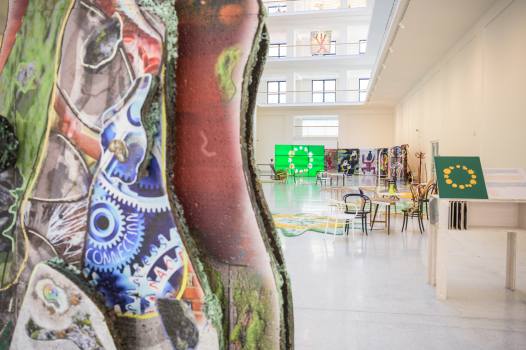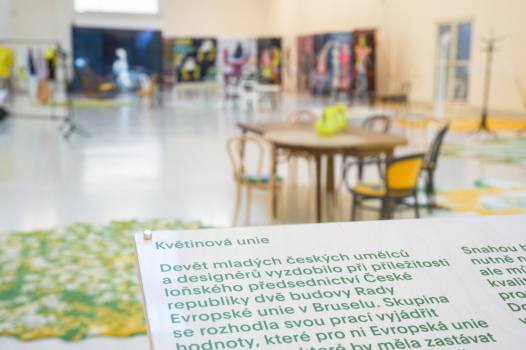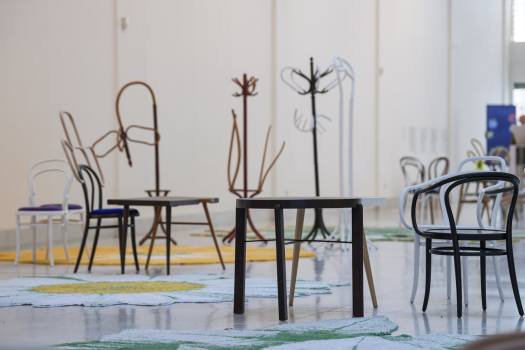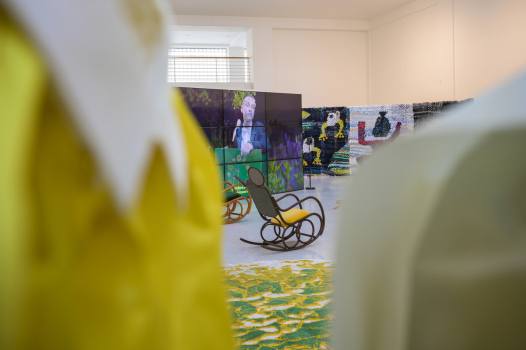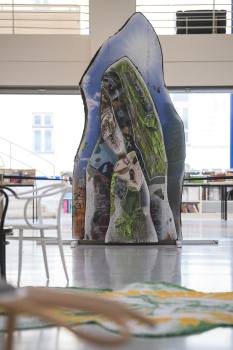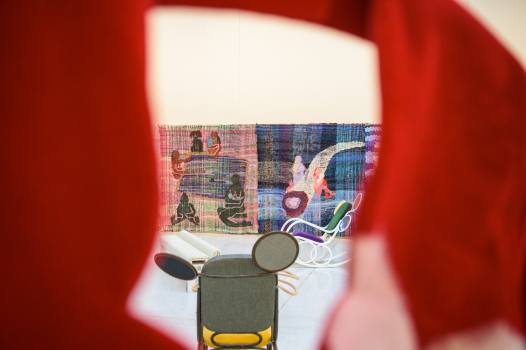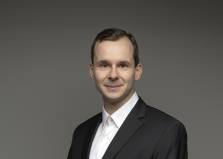As a part of last year’s Czech Presidency of the European Union, nine young Czech artists and designers created decorations for two of the Council of the European Union buildings in Brussels. They decided to use their work to express the values that the European Union embodies for them and which they believe it should continue to embody in the future. The artists also tried to highlight the idea of Europeanism rather than to simply present the Czech Republic as one of the member states. Their collective campaign, as well as their individual interventions, are linked by the concept of a community of plants sharing a single piece of soil, thus also stressing the importance of environmental issues.
All of the artworks created as a part of the Flower Union project were custom made to match the specific needs of the Council of the European Union’s administrative and representative buildings in Brussels. This, however, was not an exhibition, but rather the introduction of fine art into political and symbolic space. This was one of the reasons why the artists and designers conceived the project as a campaign based on the typically Czech approach of humanisation, of shifting great ideals to a more homelike and intimate human dimension.
Initially, the artists formed a collective, which, much like the Council of the European Union, made joint decisions regarding all of the issues associated with the campaign. They decided that it should be pro-European and positive, as well as a commentary on the scepticism that is so characteristic of Czech culture.
Their effort was to show that what is environmentally necessary need not be less attractive, but can have its own aesthetic quality. The crucial aspect of sustainability permeated all levels of the project – in how the exhibited works were produced, how they were used, and what they depicted. The introduction of often hand-made, intentionally simple homelike forms into the formal spaceof two of the Council of the European Union’s buildings also represented an effort to gain an officialacknowledgement of them. It was an effort to overcome the existing barriers between fine art and applied art, between art for the sake of art and art that serves some purpose.
The project strived to use the need to accommodate the complex operational demands of the buildings and the limited budget to its own advantage. The result is a symbolic image of a small country that does not build its identity on monumentality but rather on simple human honesty combined with the ability to find clever and innovative solutions.
The project was conceived by: Jan Brož, Barbora Fastrová, Johana Pošová, Jakub Choma (in collaboration with Tomáš Kocka Jusko, Alex Selmeci), Jakub Jansa, Valentýna Janů, Martin Kohout (in collaboration with Jurij Kudryk) and Overall Office (Karolína Juříková and Kristýna Nováková)
All of the artworks created as a part of the Flower Union project were custom made to match the specific needs of the Council of the European Union’s administrative and representative buildings in Brussels. This, however, was not an exhibition, but rather the introduction of fine art into political and symbolic space. This was one of the reasons why the artists and designers conceived the project as a campaign based on the typically Czech approach of humanisation, of shifting great ideals to a more homelike and intimate human dimension.
Initially, the artists formed a collective, which, much like the Council of the European Union, made joint decisions regarding all of the issues associated with the campaign. They decided that it should be pro-European and positive, as well as a commentary on the scepticism that is so characteristic of Czech culture.
Their effort was to show that what is environmentally necessary need not be less attractive, but can have its own aesthetic quality. The crucial aspect of sustainability permeated all levels of the project – in how the exhibited works were produced, how they were used, and what they depicted. The introduction of often hand-made, intentionally simple homelike forms into the formal spaceof two of the Council of the European Union’s buildings also represented an effort to gain an officialacknowledgement of them. It was an effort to overcome the existing barriers between fine art and applied art, between art for the sake of art and art that serves some purpose.
The project strived to use the need to accommodate the complex operational demands of the buildings and the limited budget to its own advantage. The result is a symbolic image of a small country that does not build its identity on monumentality but rather on simple human honesty combined with the ability to find clever and innovative solutions.
The project was conceived by: Jan Brož, Barbora Fastrová, Johana Pošová, Jakub Choma (in collaboration with Tomáš Kocka Jusko, Alex Selmeci), Jakub Jansa, Valentýna Janů, Martin Kohout (in collaboration with Jurij Kudryk) and Overall Office (Karolína Juříková and Kristýna Nováková)
1—1 / 13





